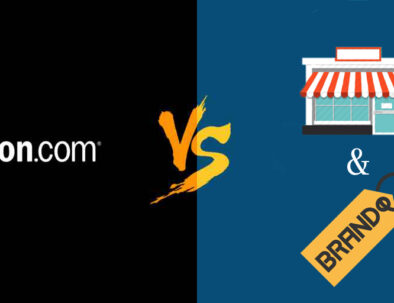We visit a lot of manufacturer websites and surprised to see how many companies continue to direct a consumer off of their website to buy at an authorized eTailer. The primary reason many brands do this is to provide the illusion they are not competing with their retailers. This strategy although philosophically is correct, has some shortcomings that can stall company growth:
1) eTailers Compete with your Brick and Mortar Retailers Anyway
The sole rationale is for manufacturers not to compete with their retailer network, but instead companies let an eTailer compete with other retailers for sales. Whether this eTailer actually owns a store or not doesn’t matter. By preferring one store you are essentially making all other retailers in your network less successful. Placing all your online sales in one basket… or should we say cart is risky as you do not diversify your customer revenues. The retailers in which an eTailer sells into also don’t get a chance to find out which sales they are missing and should be stocking. As a result your channel partners are completely blind to consumer preferences and cannot better adjust inventory to meet local market demand where a product could be experienced and bought offline where 90% of the sales still occur.
2) No Collection of Customer data
What do the fastest growing companies do? According to McKinsey & Company, harnessing the full range of sales analytics is a key element to any company seeking to capture market share. Without knowing what customers buy online or who they are your company cannot build up a database of customers to personalize messages based on past purchases or predict future purchases for that matter. The feedback loop of consumer input into how successful they are with your product post-purchase is also a key missing element not allowing your organization to improve to offer better customer experiences or products. Such aspects also include consumer reviews, which future consumers are increasingly turning towards influencing their purchase. Wouldn’t you want to be able to monitor and respond to reviews?
3) You Lose Site Control of the Customer Experience
When a customer leaves the comfort of your branded experience online, the website you are directing to may or may not have accurate product information, pictures, or pricing. The link in which some brands directly link their products to could be broken resulting in a poor customer experience. With eTailers looking to sell 1,000s of products online they cannot afford to take the time and energy you would into your products. If you sell products to the consumer that can be sold as a solution, eTailers might not have the correct consumer preferences or recommend competitive products with your item that were commonly bought together.
4) Results in Lost Sales
Probably the hardest hitting point is that eTailers really don’t care which products the consumer buys, as long as they sell something they have done their job. Many eTail sites are full of consumer distractions including promotions, holiday shipping, newsletter registrations, other products you might be interested in, and a whole host of other areas that may result in no sale or even worse, a sale to your competitors. In addition, when a consumer buys online, quite often if that product requires assembly or install they end up at your brick and mortar dealer. Inevitably they find out the consumer bought online and have a sour taste in their mouth potentially damaging your reputation.
5) Lose Ability to be a Solution Seller
Do consumers buy multiple products from you? Say for example a core product and accessories? By sending a consumer to an eTailers page, even if a direct link to the product page, a consumer can only buy one of your products at a time and not see prices or compare models. This drives sales of competitors and causes potential lost sales. By having the sale occur on your website, it increases basket sizes and ensures your products are bought.
What Alternative Does a Brand Have?
Rather than a manufacturer directing a consumer off of their website, they should embrace the consumer and allow them to buy. The orders can be fulfilled by local in market retailers who can service and support not only this consumer but any others that are to follow. Rather than competing with dealers, eCommerce can be used to combine online & brick and mortar sales channels to sell in and through dealer inventory. This is clicks to bricks strategy evenly distributes sales amongst your entire dealer network geographically to make everyone in the channel successful including the manufacturer.
Customer data can be collected and utilized in sales analytics to develop promotions and better forecast production planning. Consumers can be followed up with warranties and low-cost eMail marketing efforts to sell other items in a personalized manner leading to elevated sales for dealers and ultimately the manufacturer itself.
Finally, allowing the sale to be facilitated on the manufacturers website ensures the brand maintains control of the customer experience and prevents lost sales to competitors. So how can a brand do all this in an organized and seamless fashion?
Navigating cross-channel sales is confusing and requires tremendous collaboration. The degree of difficulty is quite high and that’s why our company ShipEarly exists. To learn more about our products and services feel free to contact us or schedule a demo.





